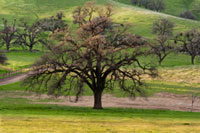Finding WWI U.S. Army Rosters

Another great resource for researching soldiers in WWI that has come online are the Muster Rolls and Rosters at FamilySearch. Using these records, you can trace your a service member throughout his service in the U.S. Army in WWI.

These records are not indexed, so using them will take a little work. These are digital images of the filmstrips that you would be using at the National Archives and Records Administration in St. Louis, Missouri.
You will need a free account at FamilySearch to access these records, but if you are not using FamilySearch, you should be.
In order to use these records, you need to know the military organization(s) to which your ancestors belonged. A good start is using the VA Master Index to locating the first organization to which he was assigned. From there, following him in each roster, you might be able to trace his transfers between organizations.
This List of Authorized Abbreviations World War I Service Discharge Cards is a valuable reference for deciphering military abbreviations of the time.
Starting Place: The VA Master Index
I used the VA Master Index for Joseph F. McMahon, which showed his first military organization as Co B 51 Pion Inf. (In real words, this translates to Co B of the 51st Pioneer Infantry Regiment.) To help, there is a Blog post about using the VA Master Index.

Next Step: Search for the soldier’s first military organization
Searched the Muster Rolls and Rosters at FamilySearch for the 51st Pioneer Infantry Regiment, I learned the description was “Pioneer Inf.” Be flexible when searching. I would not have located the regiment searching for “51st” and there were many “51” on the page. Searching for “Pion” was fairly efficient.

When you see the little camera icon on the right, that means there are digital images of the record to view on the website! Click on the camera to go to the filmstrip.
Viewing the filmstrip on the website can be intimidating, but it is a lot easier than using an actual filmstrip. More than one frame at a time can be seen.

I can click on the Image with “51st Pioneer Inf Regt” and see that Image 12 is where the muster rolls begin. (You may wish to record that number in case you want to revisit the records.)
The Images marked “SPACER” are between the separate documents for the same organization. The images marked “NEW ORGN BEGINS” will be key to finding where the first muster rolls for Company B are.

The first group of Muster Rolls are for the Headquarters Company. You can double-click on an Image to go it. From there you can use the arrows to move forward and backward through the filmstrip images. If you want to go back to seeing the browse multiple images, click on the button in the navigation menu on the left with all the small boxes.

Since the records are not indexed, checking the Image where a new organization begins, then browsing the multiple images will help location where Company B begins. Image 249 is where Company B’s records begin. On the Image, we can see that to go backward in time, we would have to look at rolls for the 10th New York Infantry Regiment (which was the predecessor of the 51st Pioneer Infantry Regiment).
I need to know when Joseph F. McMahon Served with the 51st Pioneers to be able to locate him in a roster. He enlisted on 5/28/18, so I check for the new muster rolls after each SPACER to see the dates.

Image 265 is for 30 April to 30 June 1918.

By using the arrows to scan the pages of the Muster Roll, I locate him. This record shows when he joined the organization.

At the end of the Muster Roll, soldiers lost are listed. This soldier was lost through transfer. If I were researching him, his date of transfer would be known so I could pick up the search for him in the next organization (Provisional Depot, shortened to Prov Dep).

Through these records you should be able to track your soldier through the organizations in which he served. Of course, I recommend downloading the records you find, complete with citations. Another thing I recommend is building a timeline for his service, and add the organizations along with dates of his service in them.
The only time I have had a problem following a soldier through the rosters is when the military unit disbanded. In that case, some historical research would be in order to figure out if the soldiers were transferred en masse into another organization.



